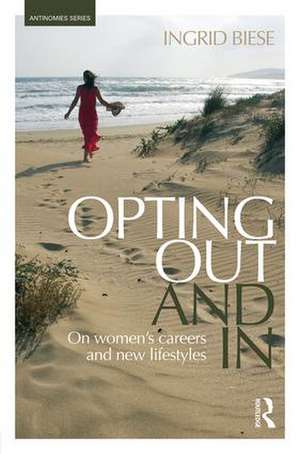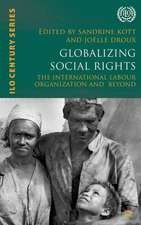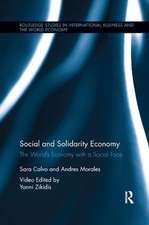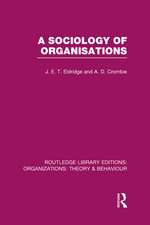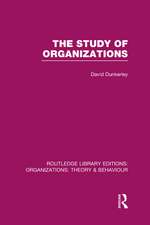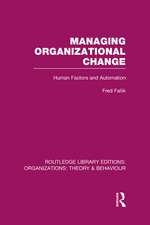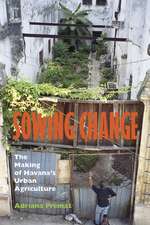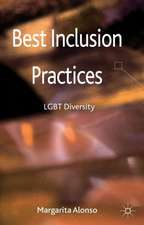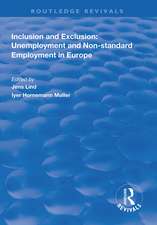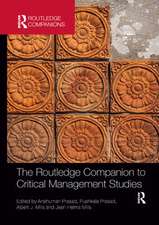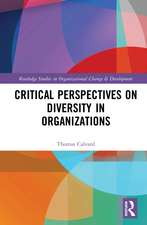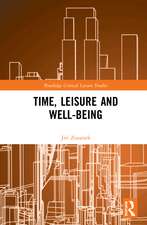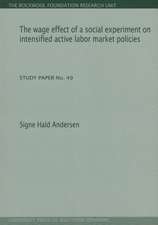Opting Out and In: On Women’s Careers and New Lifestyles: Antinomies
Autor Ingrid Bieseen Limba Engleză Hardback – 16 ian 2017
To better understand the identity issues and inner workings of the women who opt out, opting out is critically examined through three lenses: agency and autonomy; gender, femininity and the maternal; and, finally, concepts of reinvention. These three areas of inquiry all raise and problematize relevant issues that are present in women’s lives, and that have a deep and defining effect on concepts of the self. The book includes the narratives of six women, interwoven with in-depth social theory and relevant debates.
Written in an engaging and accessible style, Opting Out and In will strongly appeal to researchers and practitioners alike, working in areas such as social theory, globalization, feminist studies and identity studies.
| Toate formatele și edițiile | Preț | Express |
|---|---|---|
| Paperback (1) | 296.31 lei 6-8 săpt. | |
| Taylor & Francis – 14 aug 2018 | 296.31 lei 6-8 săpt. | |
| Hardback (1) | 1109.18 lei 6-8 săpt. | |
| Taylor & Francis – 16 ian 2017 | 1109.18 lei 6-8 săpt. |
Preț: 1109.18 lei
Preț vechi: 1352.65 lei
-18% Nou
Puncte Express: 1664
Preț estimativ în valută:
212.25€ • 219.30$ • 176.56£
212.25€ • 219.30$ • 176.56£
Carte tipărită la comandă
Livrare economică 19 martie-02 aprilie
Preluare comenzi: 021 569.72.76
Specificații
ISBN-13: 9781138639782
ISBN-10: 1138639788
Pagini: 160
Dimensiuni: 156 x 234 x 11 mm
Greutate: 0.45 kg
Ediția:1
Editura: Taylor & Francis
Colecția Routledge
Seria Antinomies
Locul publicării:Oxford, United Kingdom
ISBN-10: 1138639788
Pagini: 160
Dimensiuni: 156 x 234 x 11 mm
Greutate: 0.45 kg
Ediția:1
Editura: Taylor & Francis
Colecția Routledge
Seria Antinomies
Locul publicării:Oxford, United Kingdom
Public țintă
Postgraduate and UndergraduateCuprins
Introduction: Opting Out and In
I.1. A Debated Phenomenon
I.2. A Narrative Approach to Studying Opting Out
I.3. The Narratives
I.4. Introducing the Women
I.5. The Structure of the Book
1. Globalization, Individualization, and Gender in Contemporary Society
1.1. Globalization, Technology, and Media
1.2. Post-traditional, Risk Society
1.3. The Effect of Globalization on Working Culture
1.4. Gendered Organizations
1.5. Focusing on Work-Life Balance: Problems and Paradoxes
1.6. Competing Schemas
1.7. Conclusion
2. Lacking Agency, Coherence, and Control
2.1. Linn: The Love of Work and the Vitality of Living
2.2. Understanding Agency
2.3. Naomi and the Wakeup Call of the Emergency Room
2.4. The Importance of Narrative
2.5. Autonomy: An Alternative View
2.6. Conclusion
3. Gender and Femininity in Contemporary Society
3.1. Amy and the Unexpected Need to Be with Her Children
3.2. The Symbolic, Semiotic, and Maternal
3.3. Mediated Womanhood
3.4. Ella: Stepping Off the Ladder while Staying On at Work
3.5. Contemporary Feminism and the Freedom to Choose
3.6. Conclusion
4. Opting In
4.1. Michelle: The Journey from Incoherence to Coherence and Control
4.2. Reinvention
4.3. Nora’s Story: "I pulled the hand brake"
4.4. Reflection, Authenticity, and the Threat to Identity
4.5. Conclusion
5. Epilogue: Opting Out and Then What?
5.1. Linn: Confidence in Knowing What She Wants
5.2. Ella: Back on The Fast Track?
5.3. Nora: Getting Her Business Off the Ground
5.4. Michelle and the Ebbs and Flows of Life
5.5. Amy: Getting Back on the Job Market
5.6. Naomi and the Wear and Tear of Constant Transitioning
5.7. Opting Out – A Story of Success?
I.1. A Debated Phenomenon
I.2. A Narrative Approach to Studying Opting Out
I.3. The Narratives
I.4. Introducing the Women
I.5. The Structure of the Book
1. Globalization, Individualization, and Gender in Contemporary Society
1.1. Globalization, Technology, and Media
1.2. Post-traditional, Risk Society
1.3. The Effect of Globalization on Working Culture
1.4. Gendered Organizations
1.5. Focusing on Work-Life Balance: Problems and Paradoxes
1.6. Competing Schemas
1.7. Conclusion
2. Lacking Agency, Coherence, and Control
2.1. Linn: The Love of Work and the Vitality of Living
2.2. Understanding Agency
2.3. Naomi and the Wakeup Call of the Emergency Room
2.4. The Importance of Narrative
2.5. Autonomy: An Alternative View
2.6. Conclusion
3. Gender and Femininity in Contemporary Society
3.1. Amy and the Unexpected Need to Be with Her Children
3.2. The Symbolic, Semiotic, and Maternal
3.3. Mediated Womanhood
3.4. Ella: Stepping Off the Ladder while Staying On at Work
3.5. Contemporary Feminism and the Freedom to Choose
3.6. Conclusion
4. Opting In
4.1. Michelle: The Journey from Incoherence to Coherence and Control
4.2. Reinvention
4.3. Nora’s Story: "I pulled the hand brake"
4.4. Reflection, Authenticity, and the Threat to Identity
4.5. Conclusion
5. Epilogue: Opting Out and Then What?
5.1. Linn: Confidence in Knowing What She Wants
5.2. Ella: Back on The Fast Track?
5.3. Nora: Getting Her Business Off the Ground
5.4. Michelle and the Ebbs and Flows of Life
5.5. Amy: Getting Back on the Job Market
5.6. Naomi and the Wear and Tear of Constant Transitioning
5.7. Opting Out – A Story of Success?
Notă biografică
Ingrid Biese is an Academy of Finland Postdoctoral Researcher at the Department of Management and Organisation at the Hanken School of Economics in Helsinki, Finland. After having opted out of a career in consulting, Ingrid started working on a PhD, which she received from the Hawke Research Institute at the University of South Australia. Her primary area of research is opting out and in among both men and women, as well as sustainable working cultures and career models. Ingrid has introduced a new definition of opting out to include leaving mainstream career models to adopt new lifestyles where one can live and work on one’s own terms. Other areas of interest are globalization, individualization, identity and gender. Ingrid regularly gives talks and engages in public debates on sustainable careers and lifestyles, for example through her blog theoptingoutblog.com.
Descriere
Opting Out and In introduces a new perspective and definition of opting out that better reflects contemporary issues and lifestyles as well as providing a clear and critical analysis on what it is that propels women to opt out; the workings of identity before, during, and after the opting out process; and what it is that they opt in to instead in the new lifestyles they adopt. Written in an engaging and accessible style, Opting Out and In will strongly appeal to researchers and practitioners alike. The book will appeal to scholars and researchers in the field of social theory, globalization, feminist studies, and identity studies.
